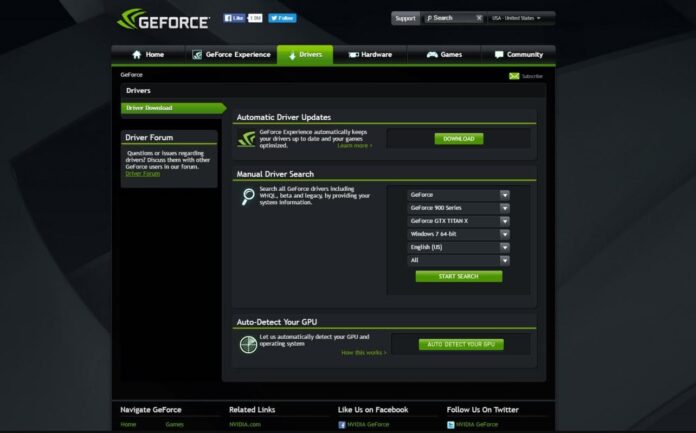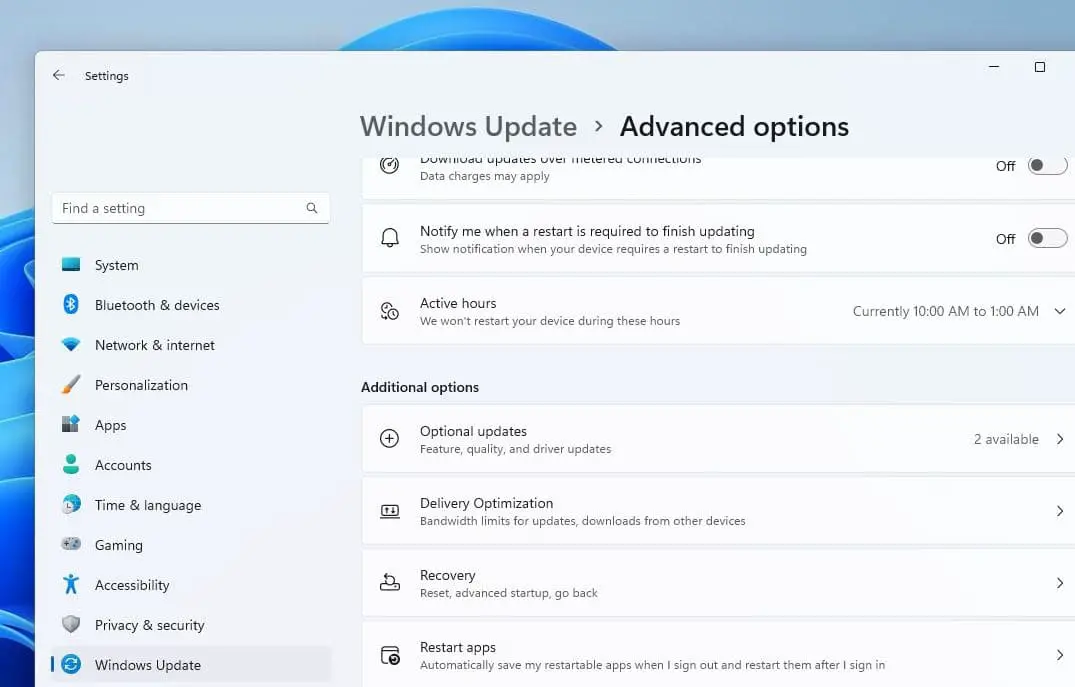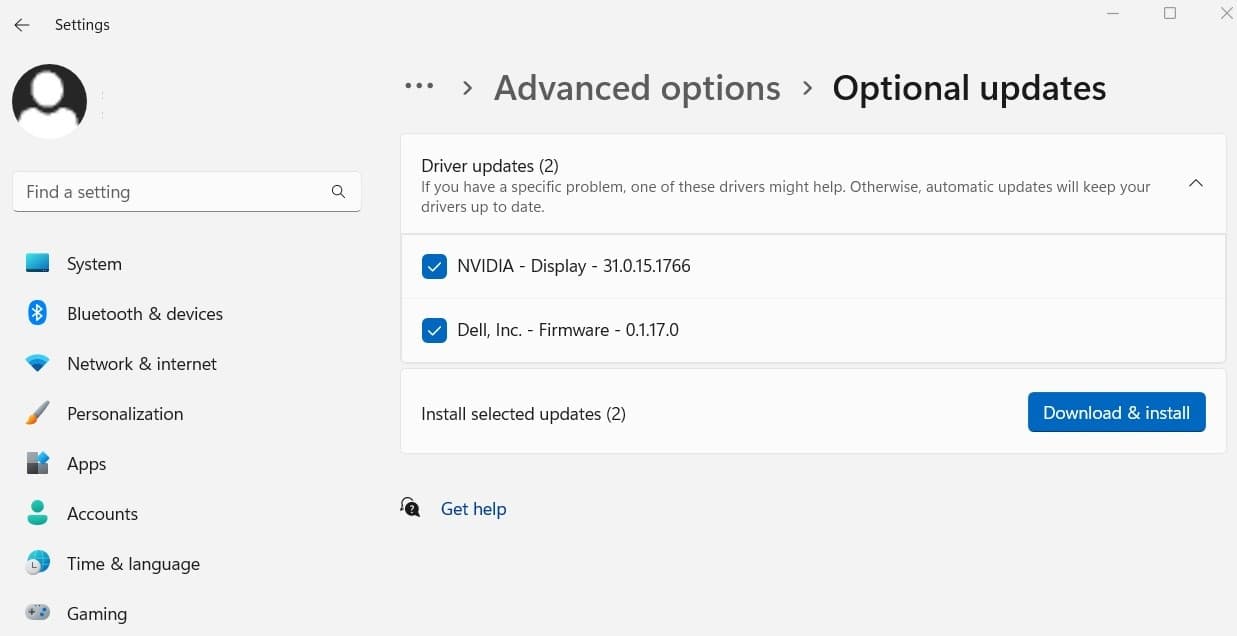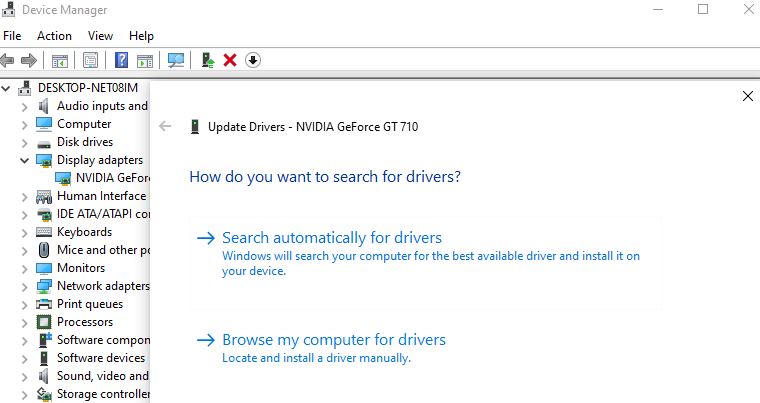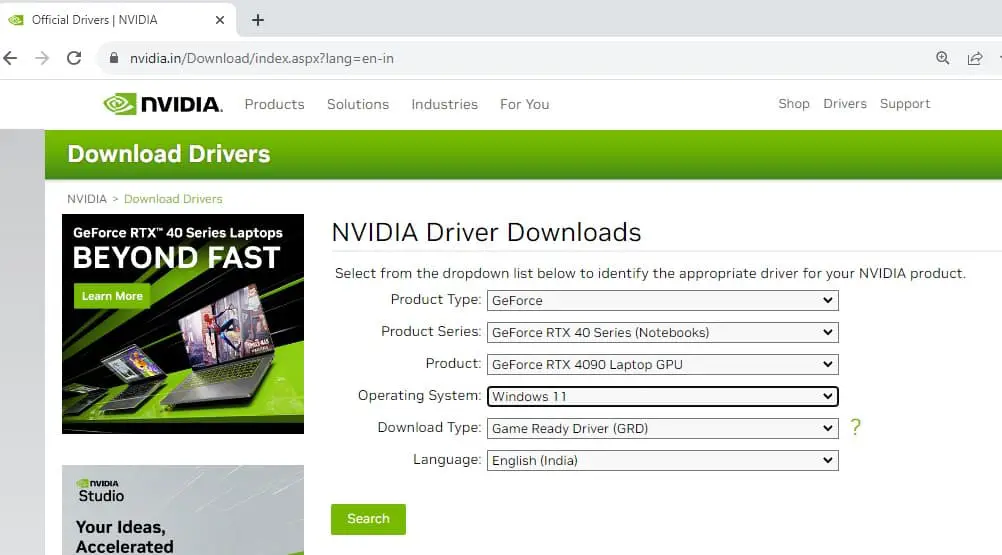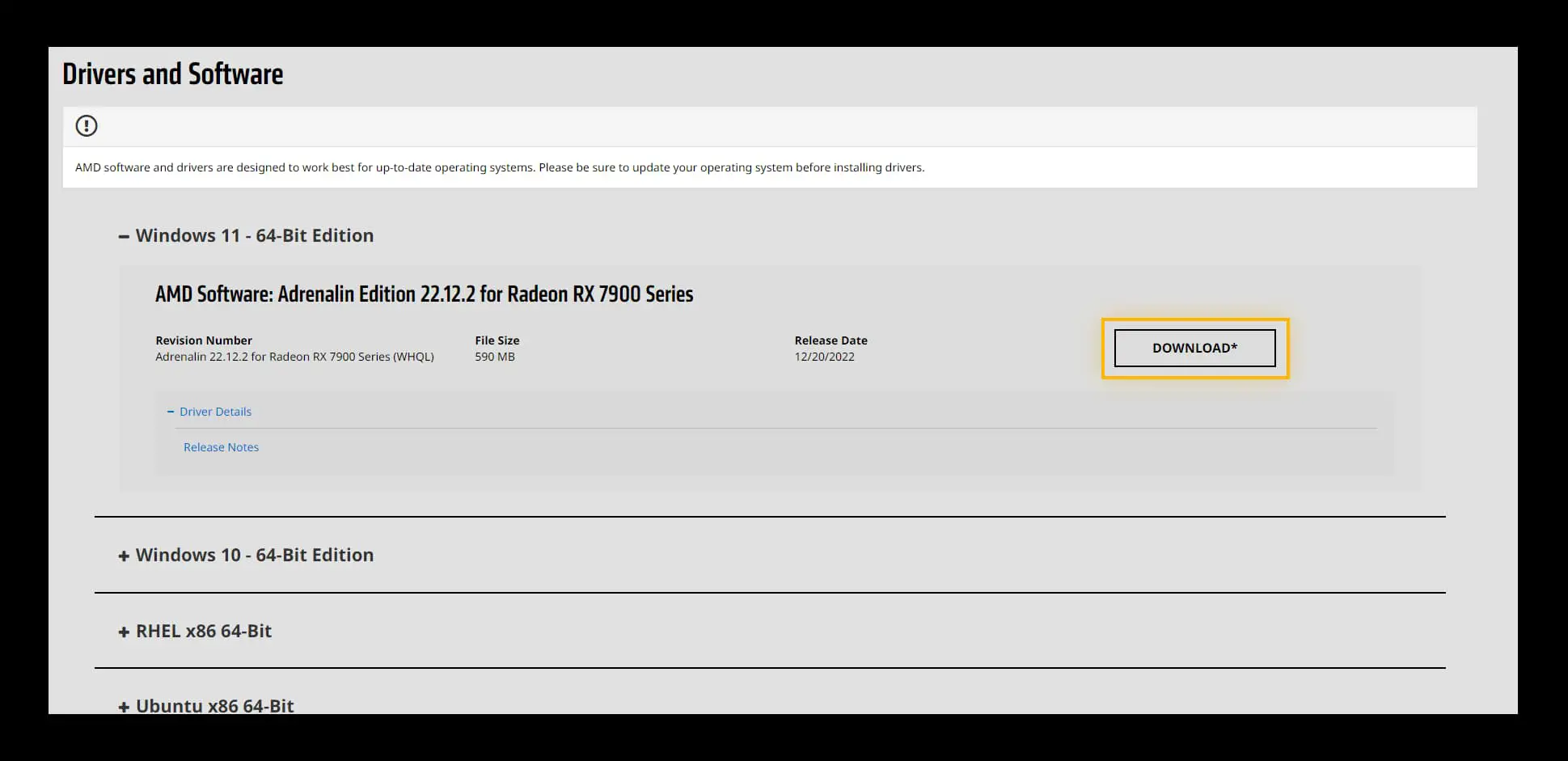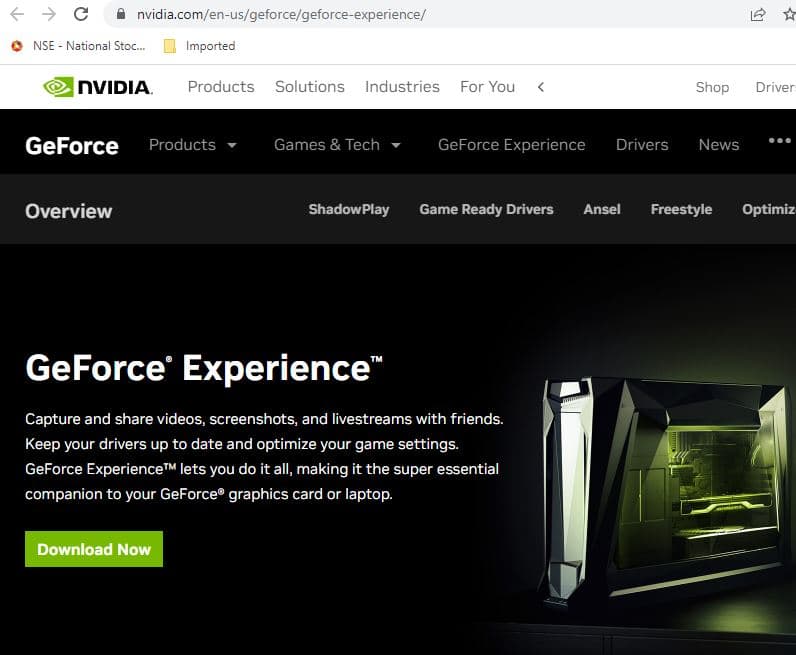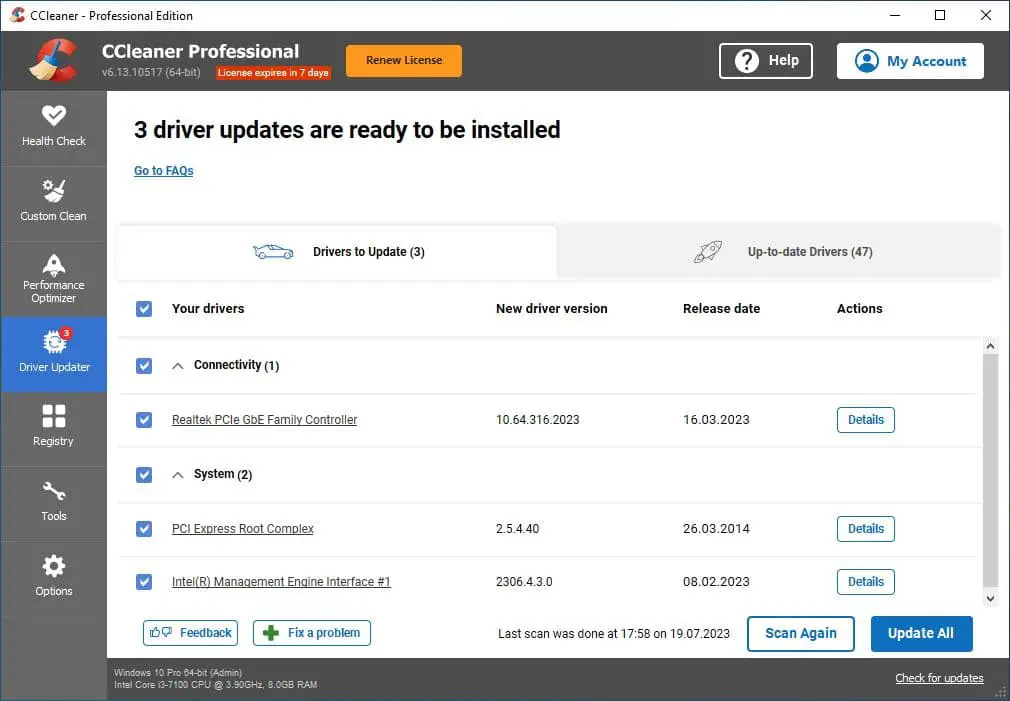Graphics Processing Units (GPUs) play an important role in rendering images and videos on your computer. To ensure your GPU operates at its best, updating GPU drivers is crucial. GPU drivers (NVIDIA GeForce or AMD Radeon) are software packages designed to enable communication between the operating system, and the GPU hardware. Updating GPU Drivers such as NVIDIA drivers update enables Performance Optimization and ensures compatibility with the latest games and applications. It also addresses known issues and bugs and includes security patches to address vulnerabilities and safeguard your system against potential threats. This article explores How to update GPU drivers on both Windows 11 and Windows 10.
How to update GPU drivers on Windows
Drivers are software components that allow your operating system to communicate with your hardware devices. In the case of GPUs, specific software known as GPU drivers (NVIDIA GeForce or AMD Radeon) facilitates communication between the graphics card and the operating system. Updated GPU drivers are essential for optimal performance, stability, and compatibility with your graphics hardware.
If you encounter graphics-related performance issues, such as black screen at startup, Games stuttering, artifacts, or system crashes, updating GPU drivers may resolve these issues. Also if you have recently upgraded to the latest Windows 11, updating GPU drivers ensures seamless compatibility with the new OS.
Update GPU driver via Windows Update
Windows Update stands out as one of the best and safest ways to receive the latest driver updates for your computer. As part of its regular update cycle, Windows Update not only delivers security fixes and feature enhancements but also includes driver updates for various hardware components, including GPUs.
- Press Win + I to open the Settings menu.
- Go to Windows update then hit Check for update, and wait for Windows to scan for available updates.
- If new updates are available allow them to download and install, Now click advanced options then optional updates,
- Here you will get driver updates for your device, check if GPU drivers such as NVIDIA drivers updates available.
- If yes check the mark on it select Download and install, once done you need to restart your computer to apply changes.
This method offers convenience and ensures that your GPU drivers stay up-to-date without requiring manual intervention.
Update GPU driver Via Device Manager
Device Manager provides another convenient method to update GPU drivers directly from within the Windows operating system. While this method may not always deliver the absolute latest drivers, it offers a straightforward way to ensure that your GPU drivers are relatively up-to-date.
- Right-click on the Start menu and select “Device Manager.”
- Expand the “Display adapters” category to reveal your GPU.
- Right-click on your GPU (NVIDIA, AMD Radeon or Intel HD graphics) and select “Update driver.”
- Choose the first option to search automatically for updated driver software.
- Windows will search for the latest drivers online and install them if available.
Follow any on-screen prompts to complete the installation and Restart your computer to apply changes.
Manual Update via the Manufacturer’s Website
You can visit the official website of your GPU manufacturer (Such as NVIDIA or AMD) to download and install the latest graphics driver compatible with your GPU model and operating system.
There are only three major graphics driver makers: Intel, NVIDIA, and AMD. To get the latest updates, all you need to do is visit their official driver web pages:
Device manufacturers frequently issue updates for their drivers to ensure your PC components deliver optimal performance.
- Visit the official website of your GPU manufacturer (NVIDIA, AMD, or Intel).
- Navigate to the drivers section or search for your GPU model.
- Download the latest drivers compatible with your GPU model and operating system (Windows 11 or Windows 10).
- Once downloaded, double-click the installer file to begin the installation process.
- Follow the on-screen instructions in the installation wizard to complete the installation.
- Restart your computer to apply the changes.
Same way you can Go to the AMD homepage and select Downloads & Support from the top menu. Click Drivers under the Radeon Graphics & AMD Chipsets, Select your specific GPU model from the product list and click Submit. Select your operating system from the list to find the compatible driver version and click Download and install the driver on your device.
Using Manufacturer’s Software
Also, GPU manufacturers offer dedicated software utilities, such as NVIDIA GeForce Experience and AMD Radeon Software, to streamline the process of updating drivers and optimizing gaming experiences. These tools not only provide automatic driver updates but also offer additional features like game optimization, performance monitoring, and customization options.
- First Download and install the manufacturer’s software utility (e.g., NVIDIA GeForce Experience, AMD Radeon Software) from the official website.
- launch the software utility, and Look for an option to check for driver updates within the software interface.
- If updates are available, follow the prompts to download and install them.
- The software may require you to restart your computer to apply the changes.
Third-Party Driver Updater Software
In addition to manufacturer-specific tools, third-party driver updater software also provides an option to keep GPU drivers up-to-date on your computer. These tools are designed to scan your system for outdated drivers across various hardware components, including GPUs, and automatically download and install the latest driver updates.
There are several third-party driver updater tool available for free or paid versions with advanced features. Choose reputable one from trusted sources to ensure reliability and avoid potential security risks.
In summary, while Windows Update offers convenience and quick access to driver updates, other methods like manual updates via the manufacturer’s website and using dedicated software utilities provide alternative approaches to ensuring that your GPU drivers are up-to-date and optimized for performance.
Remember to restart your computer after installing driver updates to apply the changes and ensure proper functionality.
Frequently Asked Questions (FAQs)
Why should I update my GPU drivers?
- Updating GPU drivers ensures optimal performance, compatibility with new games and applications, stability, and security by addressing bugs and vulnerabilities.
How often should I update my GPU drivers?
- It’s recommended to update GPU drivers periodically, especially when experiencing performance issues, after major system updates, or when installing new hardware.
How do I manually update GPU drivers via the manufacturer’s website?
- Visit the official website of your GPU manufacturer (NVIDIA, AMD, or Intel), locate the drivers section, download the latest drivers compatible with your GPU model and operating system, and follow the provided instructions to install them.
Are there any dedicated software utilities for updating GPU drivers?
- Yes, GPU manufacturers like NVIDIA and AMD offer software utilities (e.g., NVIDIA GeForce Experience, AMD Radeon Software) that streamline the process of updating drivers, optimizing game settings, and providing additional features.
Can outdated GPU drivers cause performance issues?
- Yes, outdated GPU drivers can lead to performance issues such as lower frame rates, graphical glitches, and system crashes. Updating drivers can often resolve these issues by providing performance optimizations and bug fixes.
Also read:
